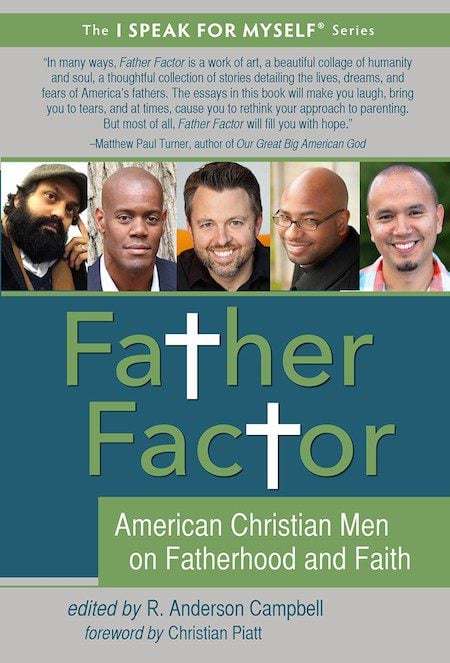The hand of the Lord was upon me, and he brought me out in the Spirit of the Lord and set me down in the middle of the valley; it was full of bones. And he led me around among them, and behold, there were very many on the surface of the valley, and behold, they were very dry. And he said to me, ‘Son of man, can these bones live?’ -Ezekiel 37:1-3
 This is the third and final post of a series of thoughts and questions I’ve been working through on the topic of Participation. It has been more of a descriptive task – “What does participation look like?” You can find the first two posts here and here. Today I want to consider our, the Church’s, participation in the World. “World” is just as tricky to define as other terms we take for granted like “culture” or “milieu”. The end of that conversation is usually an open ended question, “Whose world, which culture?” However, the way I want to approach participation in the “World” I think this sort of ambiguity will end up being in my favor. Rather than asking about how “we” participate in “our” present culture I want to go about it from the other end. In a thousand years from now (assuming Jesus hasn’t returned or we haven’t made this planet uninhabitable) what will anthropologists, historians, sociologists and theologians be able to deduce about Christianity in the 21st Century from our remains? What stories will our bones tell? This question has lingered in my mind for the past month or so because I’m trudging my way through a refreshingly thorough book by historian Peter Brown titled Through the Eye of a Needle: Wealth, the Fall of Rome, and the Making of Christianity in the West, 350-550 AD. I’m only about 200 pages in but there have been some serious gems and points to consider for the Church today. One that is acutely relevant to my question is this passage that comes from page forty-eight (source for scare quotes can be found on page 548):
This is the third and final post of a series of thoughts and questions I’ve been working through on the topic of Participation. It has been more of a descriptive task – “What does participation look like?” You can find the first two posts here and here. Today I want to consider our, the Church’s, participation in the World. “World” is just as tricky to define as other terms we take for granted like “culture” or “milieu”. The end of that conversation is usually an open ended question, “Whose world, which culture?” However, the way I want to approach participation in the “World” I think this sort of ambiguity will end up being in my favor. Rather than asking about how “we” participate in “our” present culture I want to go about it from the other end. In a thousand years from now (assuming Jesus hasn’t returned or we haven’t made this planet uninhabitable) what will anthropologists, historians, sociologists and theologians be able to deduce about Christianity in the 21st Century from our remains? What stories will our bones tell? This question has lingered in my mind for the past month or so because I’m trudging my way through a refreshingly thorough book by historian Peter Brown titled Through the Eye of a Needle: Wealth, the Fall of Rome, and the Making of Christianity in the West, 350-550 AD. I’m only about 200 pages in but there have been some serious gems and points to consider for the Church today. One that is acutely relevant to my question is this passage that comes from page forty-eight (source for scare quotes can be found on page 548):
In a brilliant recent study of the distribution of space and monuments in the Roman catacombs, John Bodel has pointed to the absence of clear social boundaries in the Christian monuments of this time. Social differences were by no means obliterated…but neither were these differences insisted upon. The Christian vaults were not fenced off as many pagan mausolea and columbaria had been. The great rows of graves provided for household dependents in pagan columbarium…had been clearly marked off by border stones and fences…By contrast, Christian family vaults were not hemmed in by marks of privacy…To enter a predominantly Christian catacomb was to enter ‘an alien and somewhat disorientating world’ characterized by a heterogenous mixture of persons of different wealth and status…no distinctively unifying beliefs about the representation of privilege and rank.
Border stones and fences were used to keep people in their proper place, according to their social status even in their death. The stories these bones tell is rather profound as we are able to deduce who was rich and who was poor. We can tell who has power and who were the powerless. Over a millennia later we can learn about these forever strangers the sort of value the world placed on each one of these people. When we enter into a Christian catacomb the experience is described as “disorientating”. Why? Because there weren’t any walls.
These Christians were buried in the same way they strove to live their lives…as a single body bound together by Christ. Walls are significant political statements. I mean “political” in the broadest possible sense: the relationship between the person and his or her community and that community’s relationship with the City (polis). Walls are a simple and profound statement to the rest of the world because of how clearly and effectively they divide the polis. From the story of Jericho to the great wall of China, Berlin Wall and even to the heated national debate we are having in America as to whether we should build a real wall between us and Mexico, walls have been a tool for Empires to control who is in and who is out. On a much more mundane level, yet equally potent, the kind of fences we build around our yard communicates what kind of relationship we desire to have with our neighbors. Conversely, using Berlin as an example, when walls come tumbling down everything about the political dynamic changes.
Walls aren’t just physical, though, are they? The psychological and emotional walls we put up are just as potent. I think the current crisis of child refugees entering into our country and the ensuing protests puts the power of walls on display. The walls of racism and nationalism are certainly preventing these grown adults (many, I’m sure are professed Christians) from seeing these children for what they are – scared, tired, human beings deserving to be treated with dignity and respect. Other walls aren’t so flashy but are built slowly over a long period of time between lovers, family members, best friends, partners at work and even between us and God. But they are just as destructive, aren’t they? This is where I want to press in a bit more because it would be rather shallow to just leave it in the abstract of current political hot buttons without recognizing there is a real wall between you and I. We recognize each other as separate human beings, individuals. There is an undeniable gap between myself and every person I have and will ever come into contact with. Intimacy is a mechanism to close that gap but it never completely does the trick, does it? The separation is the loneliness we feel even when we are surrounded by people we love. There is an inherent aspect of our human condition where we exist only in separation from each other and from God. The theological term for this wall is called Sin. The good news, the gospel of Christianity is that this divide has been and will continue to be overcome by the mediation of Christ. Bonhoeffer puts it this way in chapter five in his book “Cost of Discipleship”:
By virtue of this incarnation he has come between man and his natural life. There is no turning back, for Christ bars the way. By calling us he has cut us off from all immediacy within the things of this world…He stands between us and all other men and things. He is the Mediator, not only between God and man, but between man and man, between man and reality.
Christ’s mediation via incarnation radically subverts the nature of every relationship we have. For we do no relate directly with one another but through the one who has overcome the greatest of wall of them all, the one separating all of creation from Life. “Church without walls” is what participation in our world looks like in post-Christendom. It is a politic of vulnerability and equality. It is from a posture of humility and meekness. It’s an ethic that is centered on hospitality, on welcoming the stranger. It transcends acts of engagement because the nature of engagement is a form of argumentation. Its a mode of action which seeks to conquer the other.
Engagement also recognizes and accepts the validity of our walls that we have developed a co-dependent relationship with for comfort and security. In one way, our participation with Christ obliterates these walls. In another, participation with our worlds is the process of dismantling the walls our cultural constructs put up. My point, though, is that overcoming whatever political wall comes to my mind starts with overcoming the walls that separate me from my wife, from my friends and those in my parish – especially those I radically disagree with. If I don’t allow Christ to truly mediate my relationships with these people then all the debating I do on Facebook, Twitter or even my coffee shop about child refugees on the other side of the country or wars on the other side of the planet is just pissing in the wind. My political convictions do not have a heartbeat if I’m not toiling daily at making Christ the Mediator because he alone, quite literally, hung in the Gap at Calgary and has the power to make all things new. Such a toil is exhausting and often disheartening.
Probably the one of the most significant aspect of the Creed for my day to day faith is the bit about believing in the “communion of the saints”. The Eucharistic moment not only forges a mysterious union with the Risen Lord through reconciliation but the anamnetic moment collapses the past, present and future into an eschatological union with all of the saints. This communion gives me hope because now that I’ve seen it is possible for a Christian body to live without walls I know it is possible for not only myself to live without walls but also for my local church community. The same it true for you, too.
It is possible however long that road may be – even if it is a millennia from now when archeologists excavate our story from our bones.










